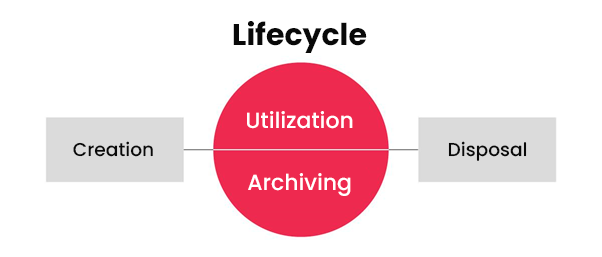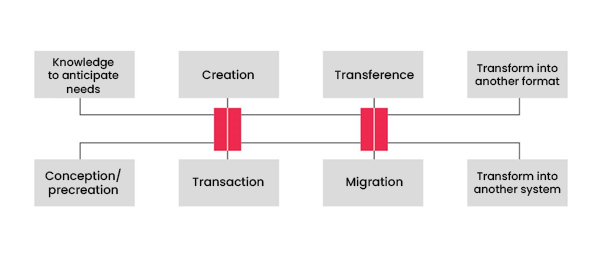Considered the first scholar of document lifecycles (which we define here as the phases of document management), American archivist and library director Philip C. Brooks argued that storing or disposing of a document should only be done after fully understanding its value.
Thus, a document without value could be discarded, while only documents with high value should go through the full document management lifecycle. According to Smith (1986), depending on how valuable it is to the organization, a document has an average lifecycle based on four phases: creation, utilization, archiving, and disposal.
Understanding the Phases of Document Management

Disposal
Another American archivist, James Rhoads (1989) describes each of the document management phases as follows:
1. Creation: the production of forms and the use of modern technologies in the process.
2. Utilization: involves using the documents to perform organizational activities. It covers file management, improvement of filing systems, and process automation.
3. Archiving: addresses the processes of document preservation and conservation, the establishment of access policies, and metadata creation.
4. Disposal: involves decision-making regarding document retention and the creation of retention programs.
Along the phases of document management, it is understood that the lifecycle begins the first time a document is organized and widely used. It continues as the document is stored for a longer period until its operational value ends, leading to either disposal or archiving. The principle behind this concept is that recorded information has a “life” similar to a biological organism. It is born, lives, and eventually dies.
Limitations of the Phases of Document Management
In Barry’s (1994) research, limitations in the concept of document management phases are identified. Consider electronic documents: they are dynamic and recursive by nature, capable of simultaneously existing in more than one phase or reappearing in an earlier phase. Therefore, research suggests that an extension of the document lifecycle concept is necessary for electronic documents.
In this context, Australian archivists Greg O’Shea and David Roberts propose a contrast between the concepts of the complete lifecycle (document continuum) and the traditional lifecycle. In the traditional lifecycle, archives (documents) are seen as “outputs,” while in the document continuum, they are viewed as “transactions.” The Standards Australia Association (S.A.A, 1996) defined the document continuum as the entire span of a document’s existence, referring to a consistent and coherent regime of management processes, from the document’s creation date (and even before creation in management system planning) to its preservation and use as an archive.
From this perspective, it is evident that the introduction of electronic document management systems has brought changes to the standard concept of the document lifecycle, replacing it with the idea of a document continuum.

As reported by Yuosoff (2000), the key differentiating factor between digital and paper documents is the “medium” in which they exist. Paper documents are treated as tangible objects, while electronic documents are dependent on hardware and software, and can quickly become obsolete. The Standards Australia Association (S.A.A, 1996) states that in electronic document management, the focus shifts to the content of the document rather than the “medium” in which it exists. Therefore, knowing that documents are technology-dependent, their content is subject to transformation and conversion. These factors have led to the promotion of the concept of a document continuum in document management.
Conclusion
Technological advancements have demonstrated that traditional document management was no longer adequate. The concept of a document lifecycle (phases of document management) needed to be replaced with a new model that more clearly represented the specific characteristics of electronic documents. The idea of “continuity” proposed by the document continuum explains that, unlike paper documents, digital files do not have an “end of life” because even when discarded, they can revert to a previous state or be transformed into other types of data.





